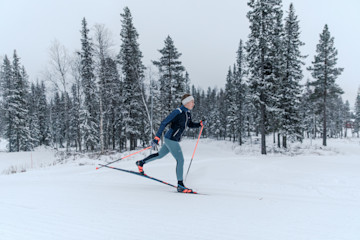
Choosing Boots for Optimal Comfort and Performance
When you're diving into the thrilling activities of skiing, snowboarding, or cross-country skiing, picking the right boots is key to enhancing your experience whether you're on the slopes or exploring the summit. The perfect boots not only enhance your control but also ensure comfort and safety, crucial both for you and those around you. We're here to guide you on what to consider when buying boots and how they should fit for optimal performance.
Boot Size
- Your toes should have room to wiggle – Standing in your boots, your toes should move freely without pressing against the boot. When you bend your knees, your toes may touch the boot's front, but shouldn't feel cramped.
- Ensure your heel stays secure – It shouldn't lift up and down as you walk or ride. This stability offers better control over your skis or snowboard.
- Test the boots with the socks you plan to use—they can influence the fit by being thicker or thinner.
Customization and Adjustments
- Heat-moldable linings can be shaped to fit your feet by warming them in a special oven, enhancing comfort significantly. The heat-moldable interior adapts to your foot, providing a custom fit and boosting comfort.
- Micro-adjustable buckles – They can be tweaked in small steps to ensure your foot stays secure all day long.
- Flex Adjustment – Depending on your skill level, select a boot with the proper flex. Stiffer flex provides enhanced control and stability but may limit mobility. A softer flex allows for more ease and movement, great for beginners or frequent snowboarders.
Focus on Comfort
- The insole – A quality insole supports and stabilizes your foot, cushioning impacts effectively. Some boots offer adjustable insoles, or you can add separate orthopedic insoles for extra support.
- Lining and ventilation – A well-lined interior offers warmth and comfort. Certain boots incorporate ventilation to ensure your feet stay dry and comfy all day.
- Lightweight boots are advantageous if you plan extended rides on the piste, mountain, or trails to reduce fatigue over time.
Choosing the Right Size
To determine the correct size, know your foot's length in centimeters. Most boots use the Mondo Point system, which measures your foot's precise length in centimeters. Measure your foot and match it to the size guide for every boot model to ensure the best fit.

Consider Climate and Weather
Think about where you'll be using your boots. If you frequently ride in cold, windy weather, it could be beneficial to invest in boots with extra insulation and weather protection. For warmer conditions, opt for lighter, ventilated boots.

